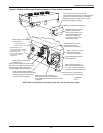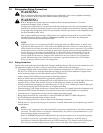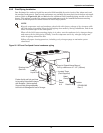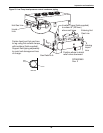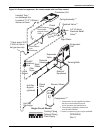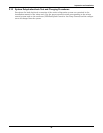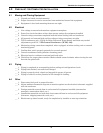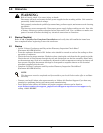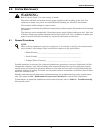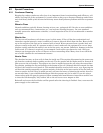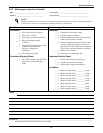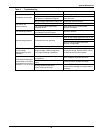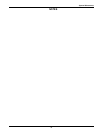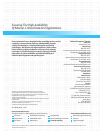
System Maintenance
34
6.2 Special Procedures
6.2.1 Condenser Cleaning
Keeping the outdoor condenser coils clean is an important factor in maintaining peak efficiency, reli-
ability and long life of the equipment. It is much easier to keep up on frequent cleanings rather than
wait until heavy build up has occurred which may create head pressure problems with the evaporator
units.
When to Clean
Normal conditions typically dictate cleaning twice a year, spring and fall. On-site or area conditions
such as cottonwood trees, construction, etc., can increase cleaning frequency. On your standard
monthly preventive maintenance schedule, a visual inspection of the coil is recommended to monitor
conditions.
What to Use
The best overall condenser coil cleaner to use is plain water. If the coil has been maintained and
cleaned at regular intervals, water is sufficient to remove dirt and debris from the fins. Heavy build
up on the exterior of the fins can be removed with a brush. Water pressure from a garden hose and
sprayer usually works well. If a pressure washer is used, make sure the equipment is set to a lower
pressure setting and that the nozzle is set to the fan spray, not stream. Otherwise, damage to the fins
could result. If a cleaner is required, we recommend a non-acidic type cleaner be used. Acid-type
cleaners can be aggressive to the coil fins as well as surrounding areas. Many sites do not allow the
use of acidic cleaners for environmental reasons.
How to Clean
The absolute best way to clean coils is from the inside out. This requires disconnecting the power sup-
ply from the condenser before working on the unit. The fan guards and fan blades must be removed to
gain access to the coil surface. The sprayer can then be worked across the coil using the water/clean-
ing solution, pushing the dirt and debris out the bottom of the coil. Although this does extend the time
involved, the results are well worth it. This method should be used at least once a year. Spraying the
coil from the outside repeatedly can push a majority of the dirt to the inner section of the fins and con-
tinue to restrict air flow. Keep in mind you may not have the luxury of shutting the unit(s) down for
an extended time. A pre-scheduled shutdown with the operator may be in order. If you are using a
cleaner along with the spraying process, follow recommended manufacturer instructions and be sure
to rinse the coil thoroughly. Any residue left on the coil can act as a magnet to dirt.
Reinstall and secure the fan blades and fan guards after the cleaning is finished. Last, reconnect the
power supply to the condenser.



